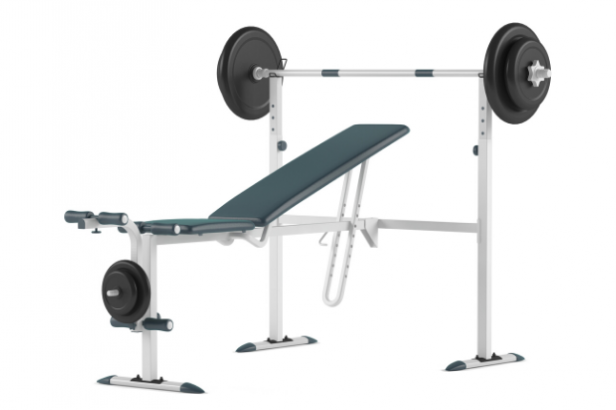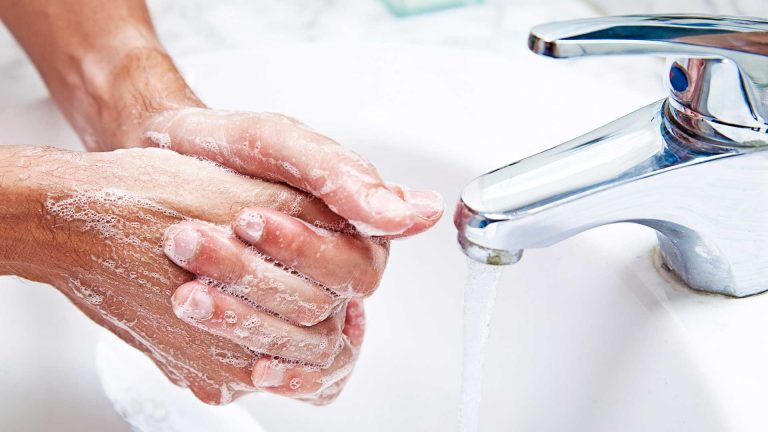Limiting COVID-19 Exposure For School Athletes With Gym Equipment Disinfection
As the later months of the year approach, many athletes are wondering if they will be playing this upcoming season. The risks presented by the pandemic have added a significant weight to the decision of whether or not the season will be canceled. As some professional sport leagues have begun to bring athletes back in, many positive COVID-19 cases have been reported among the players. While preventing athletes from coming into close contact with one another during games still remains a challenge, choices can be made to protect athletes outside of these events. These choices should allow athletes to continue training in order to stay in shape and at the top of their game. With the aid of education and careful planning, athletes can be given a safer space to live and to train as the next season approaches.
Protecting Athletes While They Train
Many sporting teams have facilities where the athletes train, and this is the primary location where they must be protected. Here, athletes are often physically engaged, and the increased respiration can lead to a drastic increase in risk of infection and transmission. The following areas should be the main focus for facility and athletic directors looking to protect athletes using those facilities:
Environmental Controls
When possible, athletes should be moved to outdoor locations to train. Indoors, air is trapped and recycled for everyone to breathe. Outside, however, contaminated air is naturally and continuously replaced by fresh air. When outdoor facilities are not an option, facility directors should try to optimize the climate control systems of their indoor facilities. For the same reasons that outdoor facilities are safer, the ventilation system indoors should be given particular attention as a way to increase indoor air flow.
Equipment Usage

Athletes often share training equipment, and this creates an obvious risk, as many people touching the same locations will spread germs. Gym equipment disinfection should be frequent, and usage should be highly monitored. In a similar fashion, the equipment used near the faces of athletes, such as helmets and mouthguards, should be cleaned frequently. This type of gym equipment is frequently touched, as it is removed and replaced, and can introduce pathogens to the mouths and noses of athletes.
Water Coolers and Other Sources
Hydration is a very important part of athletic activities, but shared coolers and water fountains can act as high-risk locations for pathogens. Athletes touch these utilities with their hands, and then water is brought up to their mouths. This creates a direct route for the transmission of pathogens, which greatly increases the risk of infection.
In addition to these areas of focus, the training space itself should be taken into consideration. While cleaning is important, decontamination ensures that pathogens are neutralized. A whole space decontamination gives athletes a safe place to train and be active.
Protecting Athletes Outside of Training
While training facilities are a major location for possible infection, they are not the only places transmission can occur. If athletes have to live and travel together, there are some crucial areas where risk should be minimized.
Interpersonal Interaction
Social distancing has proven to be one of the most successful ways to reduce the spread of pathogens. Athletes are often encouraged to share a living space with others, especially at the college level. This creates more risk for everyone involved, as it is especially difficult to socially distance from those you live with. It is much safer for everyone involved if athletes are instead given lodging by themselves and encouraged to maintain the recommended 6 feet of distance between themselves and others.

Dining Options
Similar to monitoring how athletes get their water while they train, their source of food should also be given careful consideration. In particular, buffet-style dining options lead to many individuals touching the same utensils and breathing over shared food. This leads to increased exposure and risk of infection, as food is a prime avenue for pathogens to be brought into the body.
Traveling Safely
Once again, tools such as social distancing and masks can be very important. This is especially true if athletes are going to be traveling long distances in a confined space, such as on a bus or plane. Spacing athletes out using multiple vehicles – whether that means they use their own vehicles when possible or simply bringing more vehicles – is the most effective and efficient way to provide distance. Allowing for frequent stops can also reduce risk by giving passengers a chance to step out into the open air.
Preventative Measures
One of the best ways to prevent infection is practicing proper hand washing techniques. These practices reduce the likelihood that pathogens are carried on the hands of individuals. Athletes should also be given easy access to protective equipment, such as masks, gloves, or hand sanitizer. This equipment reduces the risk of exposure by introducing a barrier between athletes and pathogens.

Following the recommendations given for training locations, both housing and transportation for athletes can greatly benefit from regular decontamination. As risks of infection loom with infection rates increasing in those sports leagues which have re-opened, planning, education, and preventative action are even more crucial for keeping athletes safe.
Additional Resources
- Study on Ventilation in Infection Control - https://www.ncbi.nlm.nih.gov/books/NBK143278/
- Coronavirus on Surfaces - https://www.nih.gov/news-events/nih-research-matters/study-suggests-new-coronavirus-may-remain-surfaces-days
- Person-to-Person Spread - https://www.cdc.gov/coronavirus/2019-ncov/prevent-getting-sick/how-covid-spreads.html
- CDC Hand Hygiene Guidelines
- Concerns About Reopening the NBA - https://www.forbes.com/sites/bendowsett/2020/06/24/parsing-concerns-surrounding-positive-covid-19-tests-among-nba-players/#5e3fb285643b
- Infection in Voluntary College Football Practices - https://www.insidehighered.com/news/2020/06/22/college-football-programs-hit-covid-after-resumption-voluntary-workouts